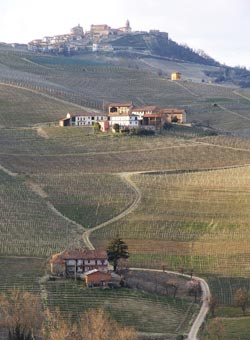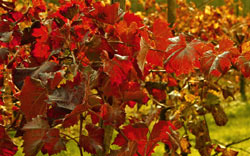The hills of Piedmont and wine
 The hills of Piedmont are concentrated in the central part of the region. Formed in succeeding ages to those that saw the formation of the Alps and Apennines. They include those of Turin, those of Monferrato and Langhe (part of the province of Cuneo and Asti, with an average altitude of 459 m), with their clay soils that make them perfect for the cultivation of the vine. They are places of deep beauty, which produce some of the wines prestigious in the world: Barolo and Barbaresco, Moscato and Arneis, Dolcetto and Barbera. Then there are the hills in the caves, also famous for the production of famous wines. These lands give wine lovers their great products, but offer alongside the tourist sights of rare beauty.
The hills of Piedmont are concentrated in the central part of the region. Formed in succeeding ages to those that saw the formation of the Alps and Apennines. They include those of Turin, those of Monferrato and Langhe (part of the province of Cuneo and Asti, with an average altitude of 459 m), with their clay soils that make them perfect for the cultivation of the vine. They are places of deep beauty, which produce some of the wines prestigious in the world: Barolo and Barbaresco, Moscato and Arneis, Dolcetto and Barbera. Then there are the hills in the caves, also famous for the production of famous wines. These lands give wine lovers their great products, but offer alongside the tourist sights of rare beauty.
The Piedmont Region has proposed the "Landscapes wine typical of the Piedmont (Langhe, Monferrato, Roero) as candidates to enter part of the World Heritage List of the 'UNESCO, which protects and enhances the recognition sites of exceptional importance, both natural and cultural.
Here are the main hilly regions: 
- Langhe. This includes the provinces of Cuneo and Asti. Their name comes from the local dialect means "Langhe" is the sharp ridges of the hills. Their landscape is largely the vast stretches of vineyards as far as the eye. Langhe in fact belong to one of the districts of the wines of Piedmont, along with the Monferrato and Roero. Here are grown the famous vineyards of Barbera, Dolcetto, Moscato and Nebbiolo. Are studded with castles and forts of the families who lived there since the Middle Ages these lands.
- Canavese. The Canavese is the northern part of the province of Turin. It is a land consists of wooded hills and fertile plains under cultivation, on which dull the red roofs of charming villages, on whose background the towering snow-capped mountains for most of the year. The mountain region includes, along the valleys Soana, Orco and Malone, the peaks of the Gran Paradiso and the first mountains of the Val d'Aosta. The region is also rich in lakes. The most famous are those of Candia and Viverone. Even here there are lots of medieval castles, some of which are transformed into sumptuous Baroque residences (like the castle of garlic or Masino). The Canavese is one of the main zones of production of Piedmontese wines. It cultivates Nebbiolo is produced and a of the few white wines of Piedmont, Erbaluce.
- Roero. This includes the provinces of Cuneo and Asti. The Roero is characterized by a sandy soil that allows us not only the production wines such as red or white wine Roero Favorita, but also excellent agricultural products, like peaches or strawberries. Even in these lands are numerous castles, witnesses of the feudal past, which in modern times were
 then transformed into elegant residences of the nobles of the court of Savoy.
then transformed into elegant residences of the nobles of the court of Savoy. - Monferrato. Monferrato lies in the provinces of Asti and Alessandria. The soil here is sandy and limestone looming hills, partly cultivated, partly wooded. Ancient origins, the region participated as Marquess of Monferrato medieval struggles. Only later in the eighteenth century, Savio able to include the region in the kingdom of Savoy. Together with the Langhe and Roero, Monferrato is part of one of the two districts of Piedmontese wines. Here is cultivated mainly in the Nebbiolo grape and produced famous wines such as Barbera, Barolo or Barbaresco.